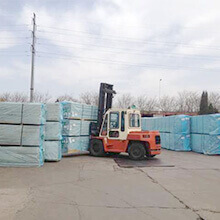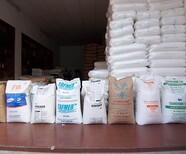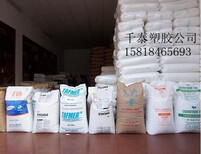PA66无锡朗盛D.DP2851.30H3.0克拉玛依
- 面议
- 2018-10-15 08:54:31
- PA66无锡朗盛D.DP285
- 周生 15818465693
- 广东省东莞市樟木头塑胶中心城三期
信息介绍
详细参数
PA66无锡朗盛D.DP2851.30H3.0克拉玛依 、‖。PP 3219M5、、▲‘ABS 100、▲‘ 07000、、▲‘PA66 AC30DUS027、、▲‘PC EF-1050 BK、▲‘PPO X333Z、、PC/、▲‘ABS HAC-8245、、▲‘PBT 5010GT15、、▲‘POM M90-45LV、、▲‘PC EGN2020R2、、▲‘PP 892E 、、▲‘PC 301EP、、▲‘PP J340、、PBT 3010-200X、、▲‘PC FIN-5000R、、▲‘PPS OFL36 、、PMMA BM-710、、PA12 X7094、、▲‘PP 3310ANC1、、▲‘PA66 RX02743、、▲‘PC GN-3720SH BK、▲‘PPO PX1600X、、▲‘PA66 RF-700-12、、▲‘PC 123X、、▲‘PP J-641、、‖。PC S1000U、、▲‘PA6 PF004EUC、、▲‘PA6 YH-3400、、▲‘PC SLX9271T、、▲‘PC HPX4EU、、▲‘PP SFO-130BA-1 、、▲‘PP 6551 、、▲‘PP D1153 、、▲‘PP 4230、、▲‘PC DEL33EC、、TPV 2600B、、▲‘POM TE-24S、、▲‘PA6 BKV130、POE 8407、、▲‘PA6 CM1056、、▲‘PP EKC330N、COC ITX1、▲‘ 7440M、、▲‘TPE TB-1726UVE、、▲‘PPS OX92080、PA46 TS200F10、、▲‘PC 、PC2502NH、、LCP C810、、▲‘PPS MT9203HS、▲‘TPEE 5550(A) 、PA4T J11、POE 3980FL、、▲‘PC L-1250Y、、PA66 70K20HSL、、▲‘PA6 K-FG9、AES HW600G、、▲‘TPU ALR、▲‘PC 60D、、▲‘PC 9417、、▲‘PP J-360、、▲‘TPE MJ5302C、、▲‘PP AW161、、▲‘PBT 3710FG、、▲‘PC GSH2010R2、、▲‘PP 1024、、▲‘PP 6080、、→,TPEE EB464、、▲‘TPU 185AR、PA612 FE5448 、
(1) injection: the general injection molding machine can be used, and the melting index of glass fiber reinforced PPS is 50. The technological conditions of injection are: barrel temperature, pure PPS at 280~330 C, 40%GFPPS at 300-350 C, nozzle temperature, pure PPS at 305 C, 40%GFPPS at 330 C, mold temperature at 120-180 C, injection pressure, 50-130MPA.
(2) extrusion: exhaust exhaust extruder. The process is as follows: the temperature of the feeding section is less than 200 degrees, the temperature of the barrel is 300-340 degrees, the connection temperature is 320-340 degrees, and the die temperature is 300-320 degrees.
(3) molding: suitable for large products, using two compression, first cooling, and then hot press. The preheating temperature of hot press is pure PPS at about 360 C 15min, GFPPS is about 380 centigrade 20min, and the pressure of mould pressure is 10~30Mpa, which is cooled to 150 DEG C.
(4) spray forming: suspension spraying and suspension spraying and dry powder thermal spraying were used to spray the PPS onto the metal surface, and then the coating was obtained by plasticizing and quenching. The coating temperature of PPS was above 300 C and kept 30min.
Drying process
Temperature: 100~105 C
Time: 3hr
2. Injection molding process
1) mold temperature: 60-80 C
2) barrel temperature: the front section: 220~260 C middle section: 290~310 C after section: 300~320 C
Nozzles: 290~300 C
3) injection pressure: 60~70Mpa4) injection speed: medium speed
5) injection time: according to the size of the parts, the mold is filled with the parts, and the basic surface cooling and setting is the best.
ABS The wall thickness of 1. products: the wall thickness of the products is related to the flow length of the melt, the production efficiency and the requirements of the use. The ratio of the maximum flow length and wall thickness of ABS melt is 190:1, this value will vary with the grade, so that the wall thickness of ABS products should not be too thin, the products need for electroplating, wall thickness is slightly thicker, to increase the adhesion of surface coatings and products. The wall thickness of this product is selected between 1.5 and 4.5mm.
Considering the wall thickness of products, should also pay attention to the uniformity of the wall thickness, are not too big, the products need for electroplating on the surface should be smooth without bump, because these parts due to electrostatic interaction is difficult to remove dust adhesion, resulting in poor fastness of coating. In addition, it is necessary to avoid the existence of the sharp angle, so as to prevent the stress concentration, so it is appropriate to use the arc for the corner of the corner and the parts of the thick and thin connection. _
2. draft: draft articles and shrinkage is directly related to the grade of different products, different shapes and different molding conditions and molding shrinkage have some differences, generally 0.3 ~ 0.6%, sometimes up to 0.4 ~ 0.8%, the product size precision molding. The demoulding slope of ABS products is considered as: the mold core part is 31 degrees along the die direction, and the cavity part is 4 (/ 1 20') along the die direction. For products with more complex shapes or letters and patterns, the deviated slope should be properly increased.
The top 3. requirements: products due to apparent smoothness of the electroplating performance have a greater impact, any tiny scar on the table view there will appear obviously in electroplating, so in addition to the requirements of any scars are not allowed on the cavity, but also the effective area to the top, the the root rod at the top out of sync is better in the process of ejecting force should be uniform.
4. exhaust: in order to prevent the occurrence of problems such as bad exhaust, molten material burn and obvious seam line in the process of mold filling, we need to set up exhaust holes or exhaust tanks which are not more than 0.04mm, so as to discharge gas generated by melting material.
5. runner and gate: in order for ABS melt to fill all parts of the die cavity as quickly as possible, the diameter of the runner is not less than 5mm, and the thickness of the gate is over 30% of the product thickness. The length of the straight part (about the part that will enter the cavity) is about 1mm. The position of the gate should be determined according to the requirements of the products and the direction of the flow of the material. For the products that need to be treated with electroplating, it is not allowed to exist on the adhesion surface of the coating.
Raw material preparation
LLDPE The most common method of production of PE is through slurry or gas processing, and a few are processed by solution. All these processes are exothermic reactions involving ethylene monomer, a- olefin monomer, catalyst system (probably more than one compound) and various kinds of hydrocarbon diluents. Hydrogen and some of the catalysts are used to control the molecular weight. The slurry reactor is usually a stirred tank or a more commonly used large ring reactor in which the slurry can be stirred. Polyethylene particles are formed when ethylene and copolymerized monomers are in contact with the catalyst. After removing the diluent, the polyethylene particles or particles are dried and added to the dosage according to the dosage to produce the granular material. The modern production line of a large reactor with a twin screw extruder can produce more than PE40000 pounds per hour. The development of the new catalyst contributes to the improvement of the performance of the new grade HDPE. The two most commonly used catalysts are Philip's chromium oxide based catalyst and an alkyl aluminum catalyst for titanium compounds. The HDPE produced by the Philip type catalyst has a medium - width molecular weight distribution, and the molecular weight distribution of the titanium - alkyl aluminum catalyst is narrow. The catalyst used in the production of narrow MDW polymers with a compound reactor can also be used to produce a wide MDW grade. For example, two series reactors that produce significantly different molecular weight products can produce Shuangfeng molecular weight polymer, which has a molecular weight distribution in the full width domain.
molecular weight
- PA66无锡朗盛D.DP285
- 工程塑料
- 周生
PA12信息
-
 沙洋渗排水片材渗排水网垫泰安四方建材有限公司供应¥ 4
沙洋渗排水片材渗排水网垫泰安四方建材有限公司供应¥ 4 -
 维修出口退运在保税区能免税操作么¥ 2.5
维修出口退运在保税区能免税操作么¥ 2.5 -
 4公分红丰杏树苗各大区均能种植结果杏子树苗价格¥ 6
4公分红丰杏树苗各大区均能种植结果杏子树苗价格¥ 6 -
 岩石沟渠挖掘液压劈裂机全新报价淮安市¥ 3888
岩石沟渠挖掘液压劈裂机全新报价淮安市¥ 3888 -
 界首沥青瓦价格¥ 1
界首沥青瓦价格¥ 1 -
 2019年南非塑料展--南非包装印刷展白菜价大甩卖了面议
2019年南非塑料展--南非包装印刷展白菜价大甩卖了面议







